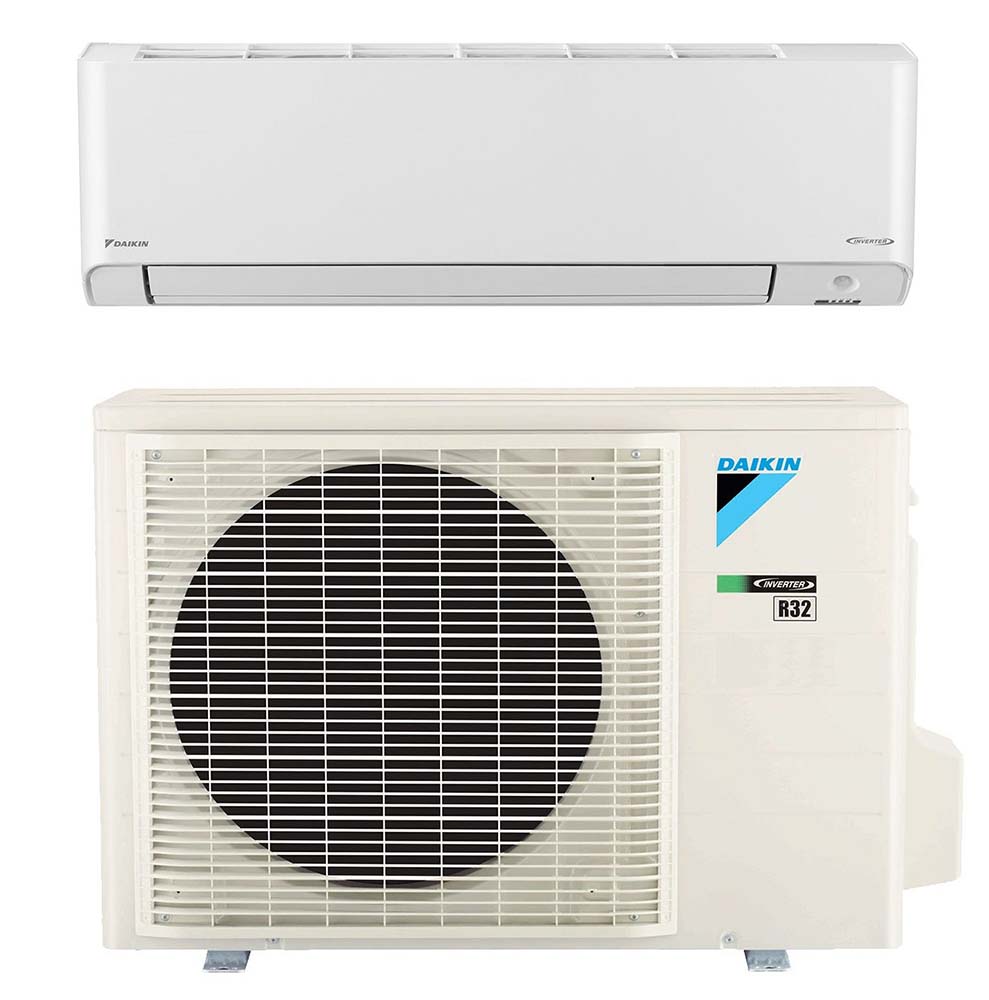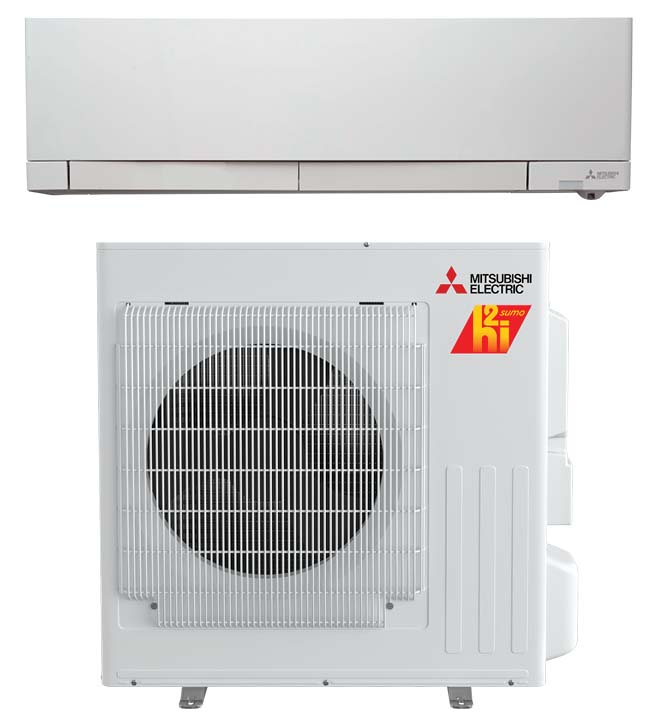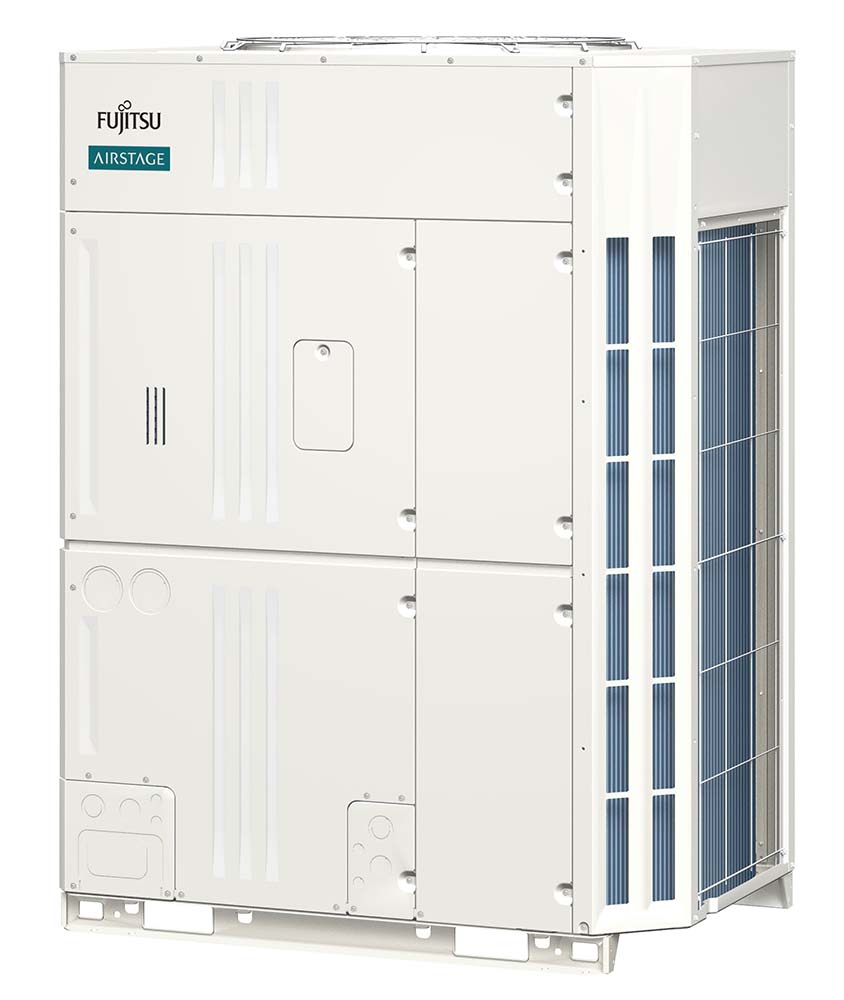Major manufacturers are betting that ductless HVAC is catching on in the U.S.
With their efficiency, versatility, sleek components, and improved cold-climate performance, ductless systems are becoming an attractive option for both new construction and retrofits. And with the incentives for building electrification and high-efficiency HVAC now — or soon to be — available under the Inflation Reduction Act (IRA), some ductless products are becoming more affordable for more people.
Here’s a look at some of the ductless HVAC products from companies that were at the recent AHR Expo in Atlanta.
LG
LG Electronics U.S.A. was touting its Multi V i, an intelligent, interactive, all-electric variable refrigerant flow (VRF) HVAC system for commercial buildings. Multi V i includes many new features, such as artificial intelligence (AI) and remote software and firmware upgradability.
Multi V i uses a single refrigerant circuit that connects one outdoor unit to many indoor units. It can maximize energy efficiency while minimizing costs, according to company literature. The Multi V i is available in sizes ranging from 6 to 44 tons, and in modular single- and dual-frame configurations.

ZONE IN: LG Electronics U.S.A.’s Multi F series of heat pumps, with the Multi F Max on the right. (Courtesy of LG Electronics U.S.A.)
LG also offers heat pumps with LGRED (Reliable to Extreme Degrees) technology, providing heat at 100% of rated capacity with ambient temperatures as low as 5°F, and continuing to provide heat with outdoor temperatures as low as -13°F.
Single-zone ductless systems can use LG’s Art Cool Premier indoor units, while multizone systems start with a Multi F or Multi F Max outdoor heat pump. The Multi F can handle up to four zones, the Multi F Max up to eight.
“Heading into 2023, heat pump technology will continue to gain momentum in the overall HVAC market, and VRF technology is well positioned to take advantage of this,” said Steve Scarbrough, senior vice president and general manager, LG Air Conditioning Technologies USA. “The electrification trend is moving America away from fossil fuels to cleaner heating and cooling technologies like heat pumps, and LG is proud to lead the way with our extensive line of high-performing, energy-efficient product innovations on display at AHR 2023.”
Daikin
Daikin Comfort Technologies is more than ready for low global-warming potential (GWP) refrigerants. Its Atmosphera was the first split system offered in North America to use R-32, the low-GWP alternative to the commonly used R-410A, which is to be phased out. Atmosphera is a single-zone ductless system.

LOOKING AHEAD: The indoor and outdoor units of a Daikin Atmosphera ductless system, the first split system offered in North America to use R-32 refrigerant, which is said to have about one-third the global-warming potential of R-410A, which is to be eventually phased out. (Courtesy of Daikin Comfort Technologies)
R-32 has a GWP of about one-third of R-410A and using it increases system efficiency by 12% over R-410A, saving on electricity, according to the company.
“We’ve also built advanced features into Daikin Atmosphera heat pumps that improve comfort, cleanliness, and usability while simplifying maintenance,” said Connie Schroder, Daikin’s senior product manager for single- and multi-zone ductless.
In addition, Daikin recently launched its VRV Emerion system for commercial use. Emerion is a variable-refrigerant volume (also called VRF) unit that can use either heat pump or heat recovery inverter technology and can be connected to up to 64 indoor units. Single-module Emerion units range from 6 to 20 tons, and dual-module units can go up to 40 tons.
Heat recovery allows for different units to simultaneously provide heating and cooling to different parts of a building, depending on the needs in the different locations. Emerion can also be used in ducted systems.
VRF systems are typically thought of as commercial products, but Daikin also has a system, VRV Life, for residential use. The largest model of VRV Life can handle up to nine indoor zones.
“We took that commercial technology and we brought it into the residential market with a much smaller system,” said John Schwartz, marketing and communications manager for Daikin Comfort Technologies. “So it’s designed, engineered specifically for residential.”
METUS
At Mitsubishi Electric Trane HVAC US, or METUS, senior manager of marketing and communications Mike Smith said the company is meeting consumer demand for improved IAQ.
Two METUS ductless systems, Smith said, offer filtration on indoor units that can capture particulate matter of less than 2.5 micrometers. (A micrometer is one-thousandth of a millimeter.) The filtration is standard on the FW (deluxe) system, optional on the GS system.
The indoor units for both systems also have the METUS Dual Barrier Coating technology (DBC).
“The patented technology prevents the buildup of dust, fibers, oil, and smoke on system components, resulting in higher efficiency and easier maintenance,” Smith said.

WRESTLING THE WEATHER: The indoor and outdoor units of the new METUS single-zone heat-pump system with a trademarked H2i sumo “hyper heating” inverter-driven compressor, which can provide heat even in sub-zero outdoor temperatures. (Courtesy of Mitsubishi Trane HVAC US)
METUS also featured its new single-zone heat pump system with an H2i sumo “hyper heating” inverter-driven compressor, which provides heat even in sub-zero temperatures — at 100% down to -10°F and reliable operation down to -22°F.
The system has a self-cleaning mode, is compatible with the METUS kumo cloud app, and has the trademarked 3D i-see sensor, which can be used to automatically adjust the operation of the system based on whether there are people in the room.
“It’s a nice, hands-free way, that’s economical and efficient, for your system to run based on the occupancy of the room,” Smith said.
METUS also displayed its Hybrid VRF product, a two-pipe VRF system that uses water instead of refrigerant and can provide simultaneous heating and cooling if needed. Hybrid VRF can be joined with standard VRF systems in facilities such as multifamily buildings, hotels, and dormitories.
Fujitsu
Fujitsu General America introduced the Airstage VU-V, a vertical-draw VRF system for commercial and light commercial use.
The Airstage VU-V can work as a heat pump or a heat-recovery system, and can be connected to up to 64 indoor units. It can provide heat with an outdoor temperature as low as -15°F and cooling with an outdoor temperature as high as 126°F.

DUCTLESS VRF: Fujitsu’s Airstage VU-V, a variable-refrigerant flow unit that can work as a heat pump or a heat-recovery system and can be connected to up to 64 indoor units. (Courtesy of Fujitsu General America)
The VU-V is available in a single-module system in outputs ranging from 6 to 16 tons and can be used in a combined system of up to 36 tons. The system can service up to 3,280 feet of refrigerant pipe.
Fujitsu also announced its Kagami Controller, a wall-mounted two-wire touchscreen control board for Fujitsu’s Airstage V-Series (VRF) systems as well as other systems. Kagami is intended for residential and commercial use; up to 16 indoor units can be controlled through a single remote.
“What this is allowing us to do is get much easier in terms of a user interface,” said Dennis Stinson, vice president of sales. “Traditionally, ductless has been known as not a super user-friendly control. So what we’ve done with this is build it in.”
Kagami makes it easier to switch between heating, cooling, and fan modes; set temperatures; and set system run schedules, according to a company press release. Kagami also lets users monitor sensors within the system, and a room occupancy sensor is available on some models.
The controller can also display the contact information of a favored HVAC contractor, and hotel companies can brand the controller with a corporate logo that’s displayed when the controller is not in use.
Samsung
Samsung HVAC showcased its WindFree cooling technology for the indoor units of ductless mini splits. WindFree uses tiny air channels to provide room cooling without hitting occupants with a blast of cold air, said Rick Nadeau, Samsung vice president of technical services and training.

CHILLING OUT: A Samsung WindFree indoor unit for a ductless system. The microchannels in the WindFree unit are designed to keep a room cool without subjecting occupants to a blast of cold air. (Courtesy of Samsung HVAC America)
All WindFree models include a “freeze wash” function that freezes, thaws, and dries the evaporator coil to rid it of contaminants. The WindFree 3.0i model offers a filter that can capture particles as small as 0.3 micrometers, Nadeau said; the model also displays the air cleanliness status.
The systems allow for voice control with Samsung’s Bixby 2.0 and other voice-control products, and they can be monitored remotely through an internet connection with Samsung’s SmartThings app. Users can adjust temperatures, change functions, monitor energy usage, and troubleshoot from anywhere.
Samsung also featured the DVM S2 Max Heat, its newest cold-climate VRF system for commercial use, which can maintain 100% heating capacity at -13°F and still offer heat at -22°F, according to a company press release. DVM S2 Max Heat systems range in capacity from 6 to 30 tons in both heat-pump and heat-recovery configurations, and a system can support up to 62 indoor units.
DVM S2 Max Heat includes AI to optimize operation, with high and low pressure control, defrost-cycle activation, and refrigerant monitoring. It also features a simplified chassis and an inverter-check function that eliminates the need for a separate tool to check the inverter.






Report Abusive Comment